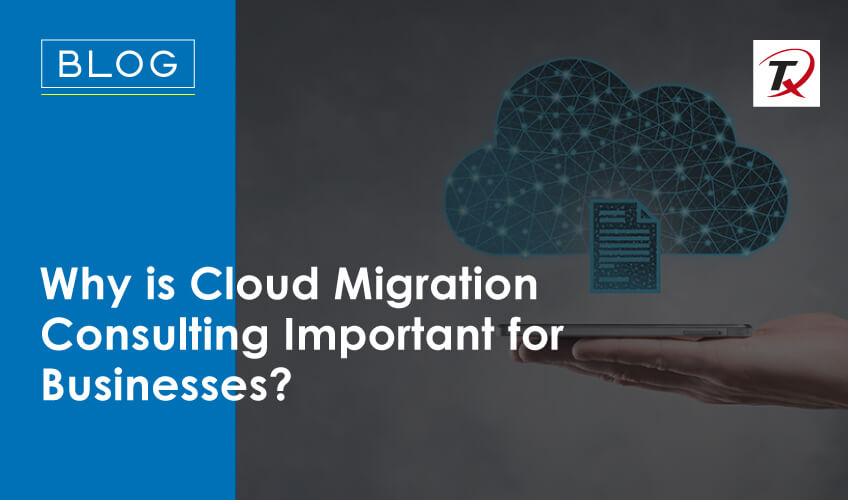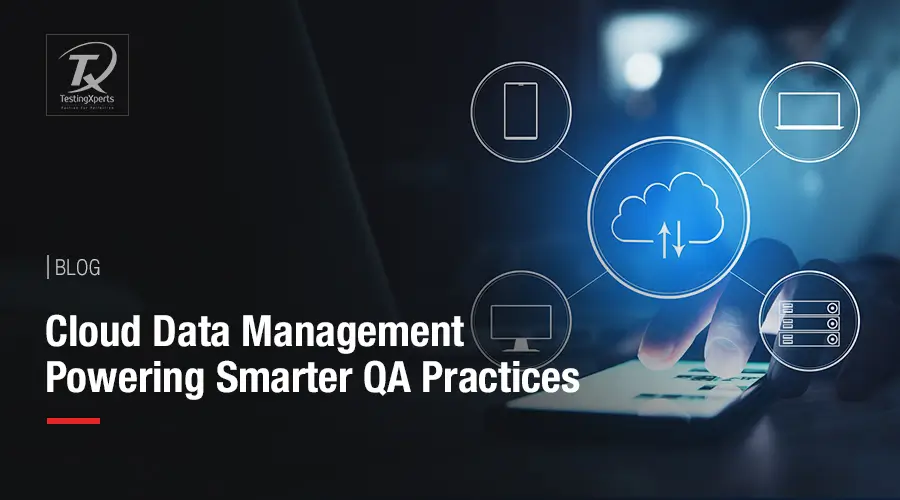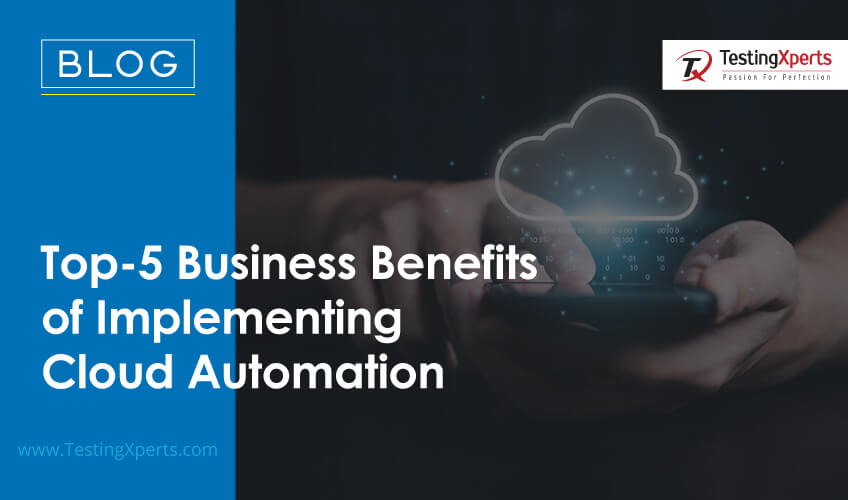
- What is Cloud Automation?
- Key Business Benefits of Cloud Automation
- Cloud Automation Tool Types
- Integrating Cloud Automation with Business Process
- Conclusion
- Why Partner with TestingXperts for Cloud Testing?
In today’s digital world, businesses continuously seek innovative ways to enhance efficiency and competitiveness. One transformative solution is cloud automation, transforming business operations across various industries. According to a survey, executives at 91% of companies believe digital technologies, including cloud automation, have the potential to fundamentally transform how companies operate.
Cloud automation streamlines various business processes, with 19% of such automation focusing on order-to-cash operations, showcasing its direct impact on critical business functions. Moreover, it’s not limited to a few departments. More than 30% of organizations employ automation in five or more departments, highlighting its broad applicability and organizational-wide benefits.
Cloud automation becomes crucial as businesses handle an ever-increasing data load and complex systems. A staggering 94% of business professionals at enterprise organizations prefer a unified platform for integrating applications and building workflow automation over multiple systems. This preference highlights the growing need for streamlined, efficient processes that cloud automation can provide. Additionally, cloud automation significantly improves both employee and customer experiences.
What is Cloud Automation?

Cloud automation refers to using technologies like AI, ML, configuration management tools, etc., to create, modify, and manage the operational aspects of cloud computing. This involves automating the setup, scaling, and management of cloud computing services and resources. It’s about using software and tools to handle tasks that would otherwise require manual intervention by IT staff.
Cloud automation simplifies and streamlines cloud operations by automating tasks such as deploying servers, managing network traffic and handling storage allocation. This automation extends to more complex processes like auto-scaling, where computing resources are automatically adjusted based on real-time demand, ensuring efficient use of resources and cost savings.
Moreover, cloud automation is crucial in maintaining consistency and compliance in cloud environments. Automating the deployment of applications and services ensures that they are configured consistently, reducing the risk of human error and maintaining standardization across environments. It also allows for faster deployment and scaling of applications, which is crucial in today’s fast-paced business environment.
Another critical aspect of cloud automation is its ability to integrate with various tools and platforms. It can work alongside other technologies like artificial intelligence (AI) and machine learning (ML) to enhance efficiency and decision-making. For example, AI can predict when to scale resources, and ML can help identify and resolve system issues automatically.
| Aspect | Cloud Automation | Cloud Orchestration |
| Definition | Involves using technology to manage and control cloud computing services and resources automatically. | Focuses on arranging and coordinating automated tasks to create a cohesive workflow in cloud environments. |
| Scope | Primarily deals with automating individual tasks or processes. | Manages interdependent sequences of automated tasks, ensuring they work together smoothly. |
| Objective | Aims to reduce manual intervention for repetitive tasks, leading to increased efficiency and reduced errors. | Aims to synchronize complex operations across different tasks and processes to achieve a specific workflow or business process. |
| Use Cases | Automated backup, auto-scaling of resources, patch management. | Managing multi-cloud environments and deploying complex applications across various cloud services. |
| Tools & Technologies | Tools like Ansible and Terraform are for specific automation tasks. | Orchestration platforms like Kubernetes and Docker Swarm for managing containers and applications. |
| Focus | Focuses on specific, often standalone tasks. | Focuses on the broader picture of how multiple automated tasks integrate and work together. |
Key Business Benefits of Cloud Automation
Cloud automation is not just a technological upgrade; it’s a strategic investment that yields significant benefits for businesses. By automating cloud-based operations, companies can achieve higher efficiency, agility, and competitiveness. This technology empowers businesses to streamline processes, minimize human error, and rapidly make data-driven decisions.

Increased Efficiency and Productivity:
Cloud automation significantly reduces the time and effort required for managing cloud resources. By automating routine tasks like software updates, server provisioning, and data backups, businesses can free up their IT staff to focus on more strategic initiatives. This automation leads to a more efficient use of human resources and enhances overall productivity.
Cost Reduction
Cloud automation helps optimize the use of cloud resources, leading to significant cost savings. For example, businesses only use and pay for what they need by automating the scaling of resources, avoiding unnecessary expenses. Automated monitoring systems can also identify and shut down idle or under-utilized resources, reducing costs.
Enhanced Compliance and Security
Automated compliance checks and security protocols ensure that all cloud operations adhere to regulatory standards and best practices. This proactive approach to compliance reduces the risk of data breaches and ensures that sensitive data is protected. Automation can also quickly identify and respond to security threats, enhancing the overall security posture of the business.
Improved Scalability and Flexibility
Cloud automation allows businesses to adjust their cloud infrastructure to meet changing demands rapidly. For instance, resources can be automatically scaled up during peak usage times to maintain performance and scaled down during off-peak hours to save costs. This scalability ensures that businesses can adapt to market changes with agility.
Faster Time to Market
Automating the deployment process of applications and services reduces the time from development to deployment. This acceleration enables businesses to introduce new products and services more quickly, staying ahead of the competition and responding faster to customer needs and market trends.
Disaster Recovery and Data Backup
Cloud automation is crucial in implementing effective disaster recovery strategies. Automated systems can be programmed to perform regular data backups, ensuring that critical data is duplicated and stored securely across multiple cloud locations. This redundancy is vital for business continuity, as it allows for a quick restoration of data and services in case of a system failure, cyberattack, or natural disaster. By automating these processes, businesses reduce the risk of data loss and ensure a faster recovery time.
Resource Optimization
Cloud automation provides advanced analytics and resource management capabilities. These tools can intelligently allocate resources to match demand by analyzing usage patterns and performance metrics. This includes scaling resources up during peak usage times and scaling down during periods of low demand, ensuring efficient use of computing power and storage. Additionally, businesses can detect and decommission underutilized or redundant resources, avoiding unnecessary costs and optimizing the overall performance of cloud services.
Continuous Integration and Continuous Deployment (CI/CD)
CI/CD pipelines are crucial for maintaining agility and quality in software development. Cloud automation facilitates these processes by automating software testing, integration, and deployment. This means code changes are automatically tested and deployed to production environments, reducing manual effort and the likelihood of human error. As a result, software updates can be released more frequently and with greater confidence in their stability and performance.
Load Balancing
Automated load balancing is essential for managing the distribution of workloads across servers. This process ensures that no single server is overwhelmed, maintaining optimal application performance and reducing the risk of server crashes. Automated load balancing responds in real-time to changes in traffic and workload, dynamically adjusting resources to maintain balance and ensure uninterrupted service.
Environment Consistency
Cloud automation ensures consistency across various computing environments such as development, testing, and production. By automating the creation and configuration of these environments, businesses can eliminate discrepancies that often lead to bugs and deployment issues. This consistency is critical for teams working in DevOps and agile methodologies, as it allows for smooth transitions between development stages and reduces the time to market for new features and applications.
Cloud Automation Tool Types
Cloud automation tools are essential in modern IT, enabling businesses to manage and optimize their cloud environments efficiently. These tools vary in functionality, from configuration management to orchestration, each playing a pivotal role in simplifying cloud operations. They help automate numerous tasks, including resource provisioning, application deployment, and system monitoring, reducing manual workload and enhancing overall cloud management.
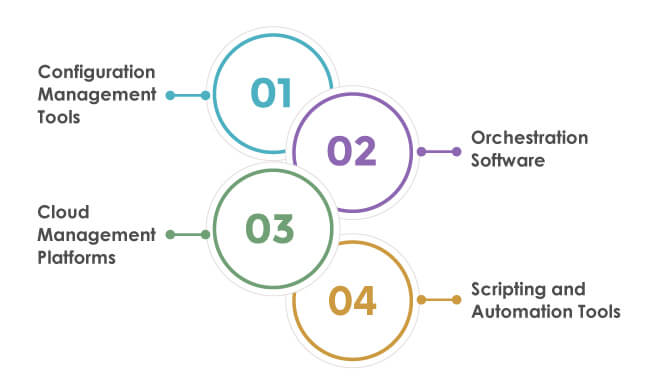
Configuration Management Tools
Tools like Ansible, Puppet, and Chef automate configuring and maintaining computer systems and software. They ensure that all systems are in a desired, predictable state, which is crucial for consistency and reliability in cloud environments. These tools can manage many servers and automate complex deployment processes, making them indispensable for large-scale cloud operations.
Orchestration Software
Kubernetes and Docker Swarm are examples of orchestration tools that manage the deployment and scaling of containers. They handle the lifecycle of containerized applications and ensure they run optimally across different computing environments. Orchestration tools are vital for maintaining application performance and reliability, especially in microservices architectures.
Cloud Management Platforms
VMware vRealize and OpenStack offer comprehensive solutions for managing cloud services. These platforms provide a unified interface for overseeing various cloud operations, including provisioning, monitoring, and governance across multiple cloud environments. They are essential for businesses that utilize a mix of public and private clouds, ensuring streamlined management and integration of different services.
Scripting and Automation Tools
Scripting languages like Python and PowerShell are used to write custom automation scripts. These scripts can automate many tasks, from simple file transfers to complex system diagnostics. The flexibility of scripting languages allows for tailored automation solutions that fit specific business needs.
Integrating Cloud Automation with Business Process
Integrating cloud automation into business processes enhances efficiency, reduces costs, and supports innovation. When effectively integrated, cloud automation becomes a core for streamlining operations, improving productivity, and enabling businesses to adapt more quickly to market changes.
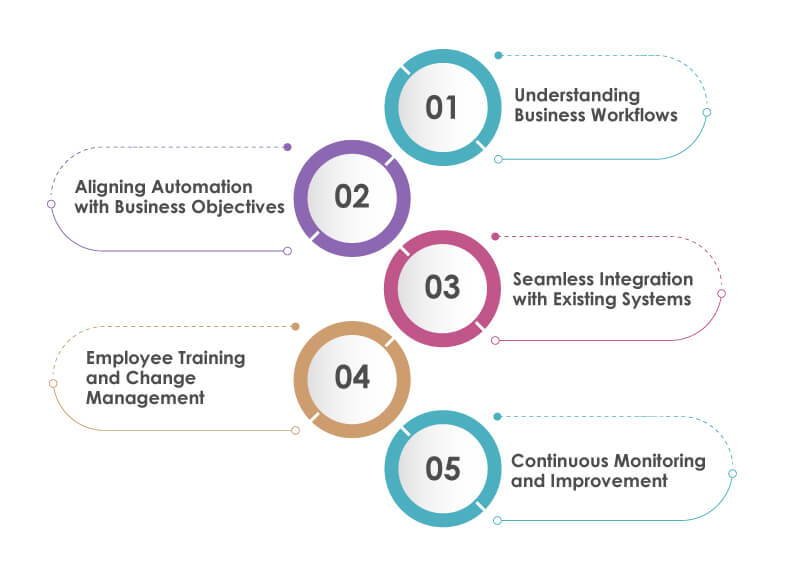
Understanding Business Workflows
The first step in integration is to understand existing business workflows comprehensively. This involves mapping out all processes, identifying bottlenecks, and pinpointing areas where automation can benefit most. A detailed analysis of workflows helps design automation strategies that align with specific business needs, ensuring that the automation adds value where it’s most needed.
Aligning Automation with Business Objectives
Cloud automation should be directly linked to achieving key business objectives. Whether improving customer satisfaction, accelerating product delivery, or ensuring compliance, each automation initiative should have a clear purpose supporting broader business goals. This alignment ensures that the automation efforts contribute significantly to the organization’s success.
Seamless Integration with Existing Systems
Integrating cloud automation tools with existing business systems and software is crucial. This integration should ensure data flows smoothly between systems, and automation tools complement rather than disrupt existing processes. Careful planning and testing are required to ensure compatibility and minimize disruptions during the integration phase.
Employee Training and Change Management
Implementing cloud automation often requires changes in how employees perform their tasks. Providing adequate training and support is essential for a smooth transition. Additionally, change management practices should be in place to address any resistance and ensure employees understand the benefits of cloud automation, both for the business and their work.
Continuous Monitoring and Improvement
After integration, continuous monitoring is key to measuring the effectiveness of cloud automation. This includes tracking performance metrics, gathering feedback, and adjusting as needed. Regular reviews and updates to the automation strategy are necessary to keep pace with evolving business needs and technological advancements.
Conclusion
In summary, implementing cloud automation in business processes marks a significant stride towards operational excellence. Implementing cloud automation streamlines workflows, increases efficiency, and is crucial in cost reduction, enhanced compliance, and improved scalability. It requires a comprehensive strategy, including the assessment of business needs, selection of appropriate tools, development of skilled teams, and continuous monitoring for optimization. As businesses adopt dynamic digital transformation, cloud automation is an essential asset, supporting innovation, agility, and a competitive edge in the market. It’s a strategic move towards a more resilient and future-ready business model.
Why Partner with TestingXperts for Cloud Testing?

Partnering with TestingXperts for cloud testing services offers comprehensive advantages that ensure your cloud applications and infrastructure are efficient, secure, and resilient. Our approach to cloud testing is not just about identifying flaws. It’s about enhancing the overall quality of your cloud-based services.
Key Differentiators
• We employ cutting-edge technologies and methodologies in cloud testing, ensuring your applications are tested thoroughly for performance, security, and compatibility with the latest cloud innovations.
• We understand that every business has unique needs. TestingXperts offers customized testing strategies to align with your business objectives and cloud configurations.
• Our rigorous security testing protocols protect your data and applications against the latest cyber threats.
• Our experts focus on testing the performance and scalability of your cloud applications, ensuring they can handle varied loads and deliver consistent performance.
• Our engineers have experience in testing SaaS products and understand the associated complexities. We bring domain expertise in various industry verticals and proven experience in other non-functional testing services.
• Our cloud automation services stand out by enhancing CI/CD pipelines, ensuring your team maintains both agility and quality with ease. Our services significantly minimize manual effort and reduce the possibility of human error by automating the testing, integration, and deployment processes.
• TestingXperts utilizes advanced in-house accelerators like Tx-Automate and Tx-HyperAutomate to enhance efficiency and accuracy, enabling faster deployment cycles and reduced time-to-market.
To know more, contact our cloud testing experts now.
Discover more
Get in Touch
Stay Updated
Subscribe for more info


